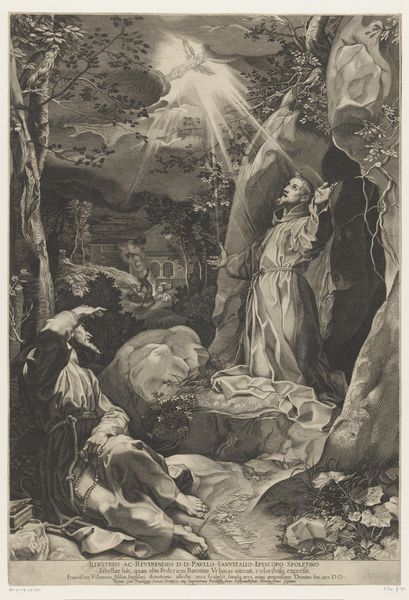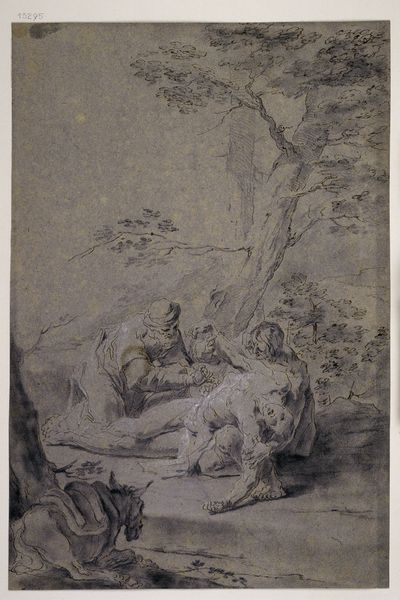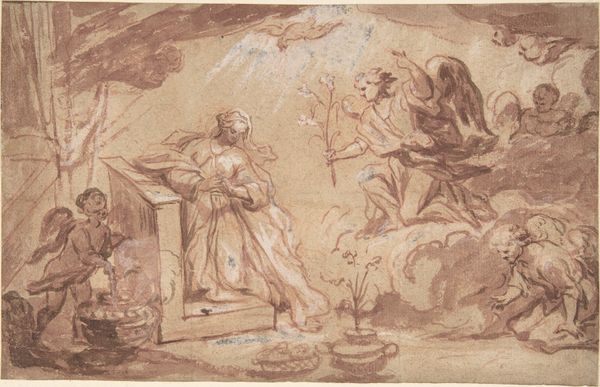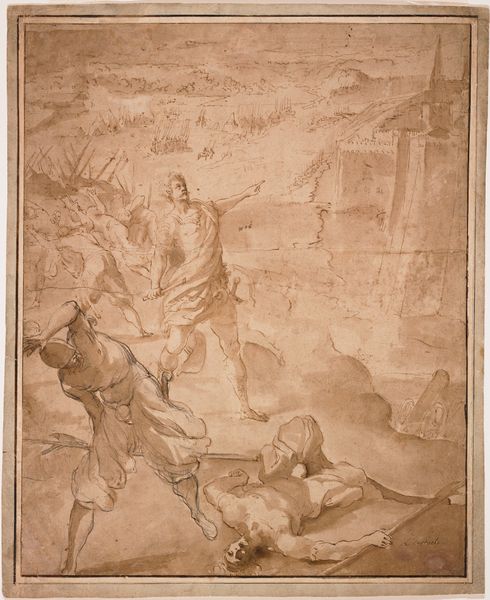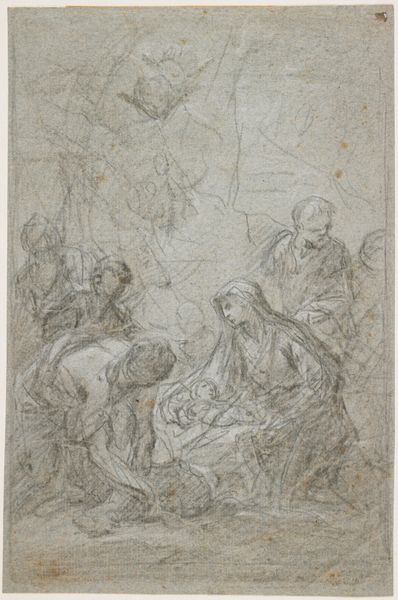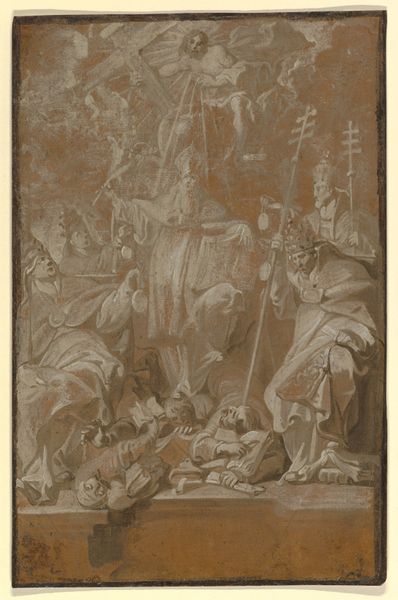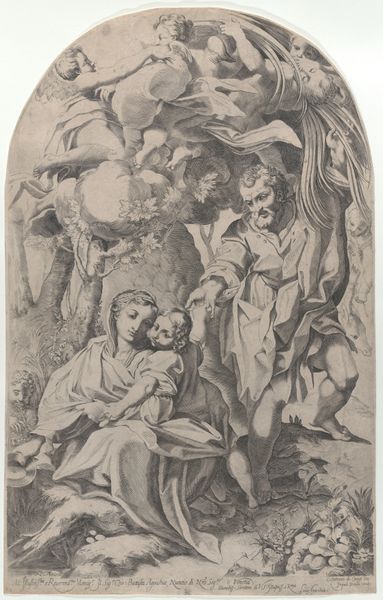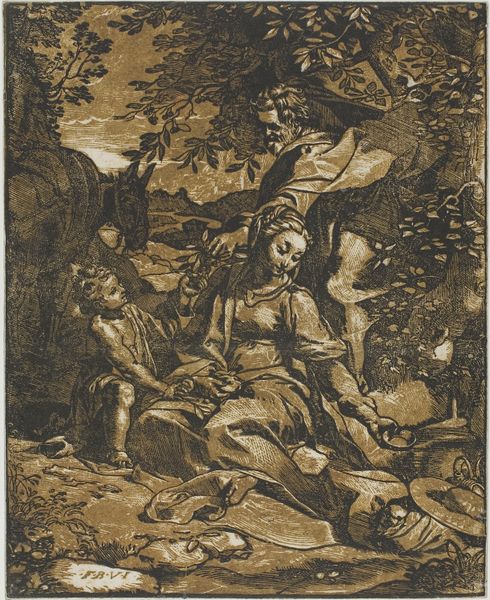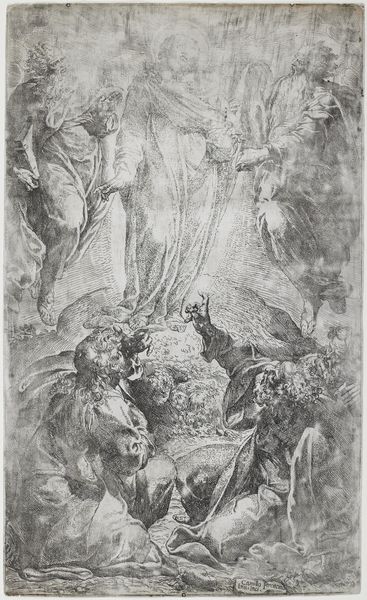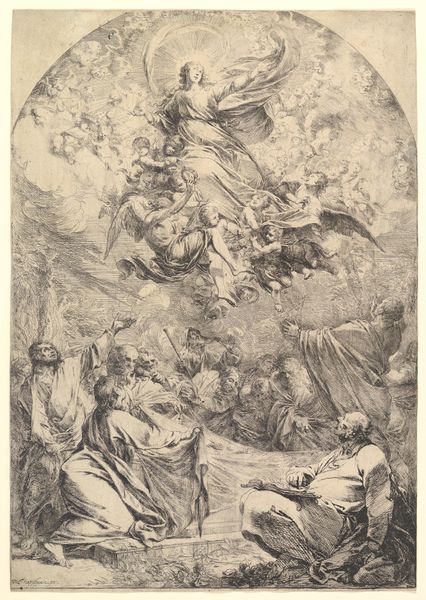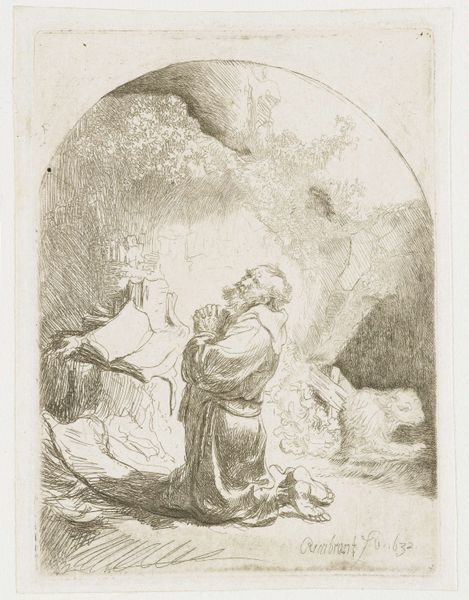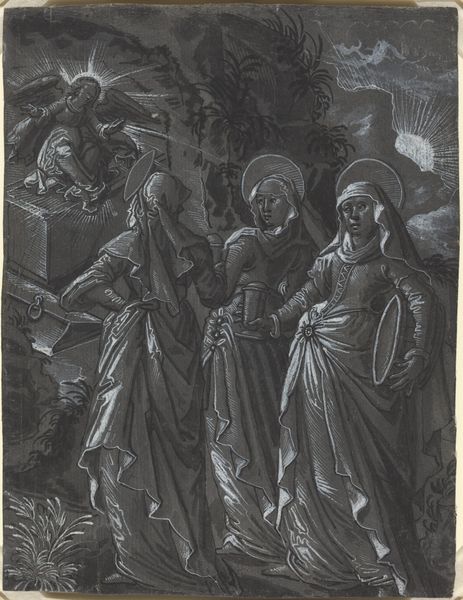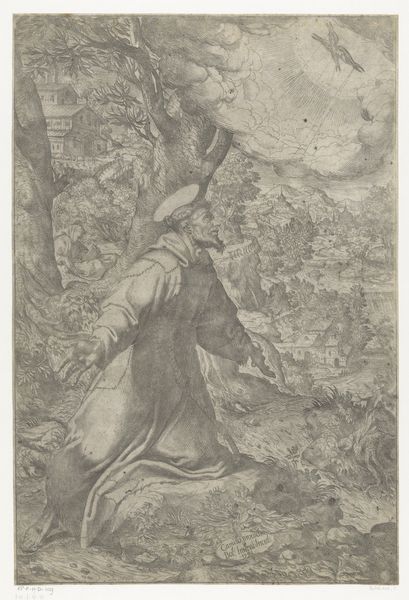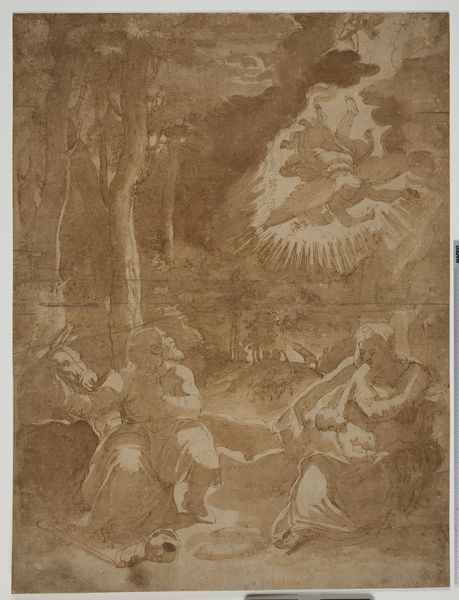
Der Heilige Franziskus empfängt im Beisein Bruder Leos von Assisi die Wundmale
0:00
0:00
drawing, paper, ink, charcoal
#
drawing
#
charcoal drawing
#
figuration
#
paper
#
charcoal art
#
ink
#
charcoal
#
history-painting
#
charcoal
#
italian-renaissance
Copyright: Public Domain
Editor: We’re looking at a drawing, charcoal and ink on paper, by Federico Barocci: "Saint Francis Receives the Stigmata, with Brother Leo of Assisi," housed here at the Städel Museum. It’s quite atmospheric, almost ethereal, and makes me think about religious ecstasy. How would you interpret this work? Curator: This drawing offers a window into the complex relationship between art, the church, and the emerging role of individual spirituality during the Italian Renaissance. Barocci, in depicting this iconic scene from the life of St. Francis, engages with established iconography, yet infuses it with his own sensibility. Consider how the setting, almost stage-like, emphasizes the theatrical nature of religious experience that was becoming popularized through sermons and dramatic church decorations of this period. What impact do you think a visual representation of such a private and intense experience, like receiving the stigmata, would have had on the wider public? Editor: I guess it made the divine more accessible, relatable even. Instead of a distant God, you have this intimate, almost tangible moment. And the art itself…the drawing style softens the religious message. It's persuasive in a new way. Curator: Exactly! It is propaganda. The Church's imagery becomes democratized, individualized, designed to evoke emotion and empathy in its audience. Do you notice how the light directs our gaze? Editor: Yes! The beams of light force you to consider St. Francis, which I hadn't realized at first. This interpretation definitely reveals the layers of the Renaissance relationship between religious institutions and art. Curator: And the complex role images played in shaping faith! Thinking about the image in its historical and social setting opens it up immensely. Editor: Absolutely. Seeing how the church utilized art to engage people emotionally is quite a revelation. I’ll never look at religious art the same way. Curator: And hopefully that provides you a new lens to examine all visual culture!
Comments
No comments
Be the first to comment and join the conversation on the ultimate creative platform.
